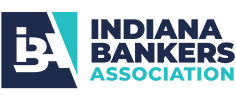The passing of Senate Bill 2155 adds another level of complexity to an already complex Regulation. The Bill exempts institutions that originate fewer than 500 closed‐end loans or open‐end lines of credit in each of the two preceding calendar years from reporting certain HMDA data points. This “relief” spurred the question, “What and how do we report?” The OCC and FDIC published statements on these amendments on July 5, 2018. The answer to this burning question is, if you meet the criteria above, you will still report, but you will report certain data points with an exemption code that will be provided by the CFPB later this summer and communicated via an update to the 2018 Filing Guide (FIG). That being said, it is not clear what data points affected institutions will be exempt from reporting. Whether your institution has a large or small LAR, you can count on TCA to provide you with the latest information and sound risk‐based recommendations to help you navigate today’s ever‐changing compliance requirements.
—Foreword by Michelle Strickland
When I was placed on TCA’s HMDA Team, I thought to myself: “It’s HMDA, how difficult can this be?” Well, folks, that question has been asked and answered. My response to that question is, “New HMDA is hard – and it gives me a headache.”
Remember when new HMDA came out? The big talking point was, “It is based on a dwelling secured standard.” We may have been lured into thinking that loan purpose was no longer relevant … but we were wrong.
While all loans have a dwelling secured standard, loan purpose still plays a factor in reviewing whether our loan is HMDA reportable. Not all dwelling secured loans to a natural person are consumer purpose, and not all loans on investment properties are business purpose. One thing that is a standard – all loans to non‐natural persons (an LLC or Company) are business purpose. Once we determine that a loan is dwelling secured, we must determine whether the loan is a consumer purpose loan or a business purpose loan.
- A consumer purpose, dwelling secured loan is HMDA reportable regardless of purpose. We will select the loan purpose as purchase, refinance/cash‐out refinance, home improvement, or other.
- A business purpose, dwelling secured loan is only HMDA reportable if the purpose of the loan is to purchase a dwelling, refinance a dwelling or improve a dwelling or the real property on which the dwelling is located. “Other” is not an option on a business purpose loan.
Let’s look at a few examples:
Scenario 1: John Smith owns his primary residence ree and clear. The loan is to cash out $100,000 to buy a printing business.
HMDA Status: Although this loan is to an individual and the primary residence secures the loan, this loan is a business purpose loan. Business purpose loans are only reported if the purpose is to purchase, refinance or improve a dwelling. This loan would not be HMDA reportable.
Scenario 2: John Smith is refinancing his primary residence. He is refinancing a mortgage of $150,000 and taking $100,000 cash out to buy a printing business.
HMDA Status: In this instance, we have a mixed purpose. $150,000 is consumer purpose (refinance of primary residence) and $100,000 is business purpose. This loan is HMDA reportable as either a refinance/cash‐out refinance, depending on whether the institution distinguishes between a cash‐out refinancing and a refinancing in either its guidelines or its investor’s guidelines.
Scenario 3: John Smith owns a residential duplex, rental property free and clear. Mr. Smith is cashing out $75,000 to take a vacation to Europe and purchase a new personal vehicle.
HMDA Status: John Smith may be one of our commercial customers, and the property is an investment property, but this is a consumer purpose loan. As such, this loan is HMDA reportable as a consumer purpose, and Loan purpose is “Other.”
Scenario 4: Smith LLC owns a rental dwelling free and clear. Smith LLC is cashing out $75,000 so that John Smith can take a vacation to Europe and purchase a new personal vehicle.
HMDA Status: Smith LLC is the borrower, and thus this is a business purpose loan. The loan would not be HMDA reportable because the loan is not to purchase, refinance or improve a dwelling.
Is the headache starting yet? Don’t worry, you are not alone.
What can add to the confusion is when our loan officers don’t ask the question, “What is the money being used for?” Or perhaps the question was asked, and the customer’s response was “for future investments.” Is it HMDA reportable? The short answer is, we don’t know: there is not enough information available to determine whether the loan is HMDA reportable. Mr. Smith is cashing out of a free and clear investment property (dwelling) for a future investment. If that future investment is the purchase of a dwelling, then it is HMDA reportable. If the investment is to buy that printing business, then it is not HMDA reportable. Make sure there is sufficient information in the files to determine whether the loan is HMDA reportable.
We also caution that you must read and evaluate the loan write‐ups/presentations on commercial loans carefully, as it is possible that a loan coming through your commercial lending department could have a consumer purpose. (See Scenario 3 above.)
Once a determination is made that we have a business purpose, HMDA reportable transaction, there are some HMDA fields that are reported and other fields that are not applicable to business transactions. There are also field reporting requirements that vary, depending on whether our business purpose loan is to a non‐natural person (for example, LLC or Corporation), or if it is to a natural person. We have provided a chart to help navigate through these HMDA fields for a business purpose loan.
HMDA Field Requirements for Business Purpose Loans
| HMDA Field Total Points and FeesHMDA Field | Use Standard Reporting Rules | Report as Not Applicable | Comments/Instructions |
| ULI | X | ||
| Application Date | X | ||
| Loan Type | X | ||
| Loan Purpose | X* | *Note: “4” ‐ Other ‐ cannot be used on business purpose transactions. | |
| Pre‐Approval | X | ||
| Construction Method | X | ||
| Occupancy | X | ||
| Loan Amount | X | ||
| Action Taken | X | ||
| Action Taken Date | X | ||
| Property Address | X | ||
| Property Location | X | ||
| GMI Information | X | X | Report GMI following standard reporting rules for natural persons, and report NA for non-natural persons (i.e., LLC). NA is reported as 4/7/4. Do not collect or report GMI information on Guarantors and Co‐signers as they not considered borrowers. |
| GMI Information Obtained | X | X | Report information using standard reporting rules for natural persons. Use Code 3 for Not Applicable when GMI information is for a nonnatural person (i.e., LLC). |
| Age | X | X | Report information using standard reporting rules for natural persons. Use Code 8888 for Not Applicable for a non‐natural person (i.e., LLC). |
| Income | X | X | Report information using standard reporting rules for natural persons. Report NA when applicant or co‐applicant is a non‐natural person (i.e., LLC) or when the loan is secured by a multifamily dwelling. |
| Purchaser | X | ||
| Rate Spread | X | Always use NA, as business loans are not subject to Regulation Z | |
| HOEPA Status | X | Use “3” for not applicable. Businesspurpose loans are not subject to HOEPA. | |
| Lien Status | X | ||
| Credit Score | X | X | Use 8888 for Not Applicable for non‐natural person. Report credit scores for natural persons. |
| Credit Score Model | X | X | Use 9 for not applicable for non‐natural persons. Report the scoring model for natural persons. |
| Reason for Denial | X | ||
| Reason for Denial | X | ||
| Total Loan Costs | X | Use NA as business purpose loans are not subject to Regulation Z | |
| Origination Charges | X | Use NA as business purpose loans are not subject to Regulation Z | |
| Discount Points | X | Use NA as business purpose loans are not subject to Regulation Z | |
| Lender Credit | X | Use NA as business purpose loans are not subject to Regulation Z | |
| Total Points and Fees | X | Use NA as business purpose loans are not subject to Regulation Z | |
| Debt‐to‐Income Ratio | X | X | Use NA when DTI is not relied upon in making a credit decision. Note that if either applicant is a natural person and we relied on a DTI, DTI is reported. If all applicants are non‐natural persons enter NA. |
| Combined LTV | X | ||
| Interest Rate | X | ||
| Pre‐payment Penalty Term | X | Use NA as business purpose loans are not subject to Regulation Z | |
| Loan Term | X | ||
| Introductory Rate Period | X | ||
| Balloon Payment | X | ||
| Interest Only Payments | X | ||
| Negative Amortization | X | ||
| Property Value | X | ||
| Manufactured Home Secured Type | X | ||
| Manufactured Home Property Interest | X | ||
| Total Units | X | ||
| Multifamily Affordable Units | X | ||
| Submission of Application | X | ||
| Initially Payable | X | ||
| NMLS Number | X | Loan Officers are not required to have an NMLS number for commercial loans. However, if the loan officer on the transaction has an NMLS number it must be reported. If not reporting an NMLS number, use NA in this field. | |
| AUS | X | Report the AUS used when either applicant or co‐applicant is a natural person. Use “6” for Not Applicable if applicant and co‐applicant are not natural persons, or if an AUS was not used. | |
| AUS Results | X | Report the AUS results when either applicant or co‐applicant is a natural person. Use “17” for Not Applicable if applicant and co‐applicant are not natural persons, or if an AUS was not used. | |
| Reverse Mortgage | X | ||
| Open‐end Line of Credit | X | ||
| Business Purpose | X | Should always be “1” Primarily for business purpose. |






